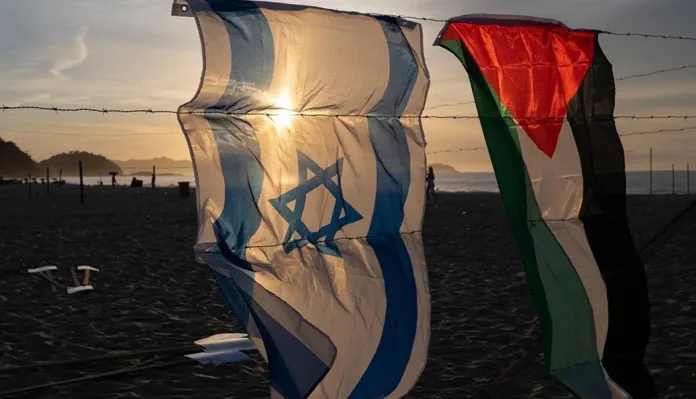Israel backs Trump’s Gaza plan promising peace and prisoner swaps, but airstrikes still thunder
Israel has formally approved the first phase of a ceasefire deal in Gaza, a move set to bring a fragile halt to months of conflict and open the way for the release of hostages. But even as Prime Minister Benjamin Netanyahu’s office confirmed the decision, reports of overnight air strikes in Khan Younis cast a grim shadow over the announcement.
According to the plan—brokered under the initiative of US President Donald Trump—Israel’s military will pull back to a line that leaves it in control of roughly 53% of Gaza. In return, Hamas is required to release 20 living hostages within 72 hours. Once that condition is met, Israel will release about 250 Palestinian prisoners and 1,700 detainees held in Gaza.
The ceasefire was expected to take immediate effect following Cabinet approval. However, eyewitnesses described hearing explosions and gunfire in the southern Gaza Strip through the night. Residents near the Netzarim corridor reported artillery shelling, even as Israel’s leadership publicly celebrated what Netanyahu called “a momentous development.”
The arrangement is designed to bring temporary calm to a region ravaged by war, displacement, and famine. The United Nations says hundreds of aid lorries will soon cross into Gaza, carrying food, fuel, and medicine for its two million residents—most of them already uprooted from their homes. Yet, despite the relief this may bring, the atmosphere remains tense and uncertain.
Trump’s plan divides the ceasefire into several phases. After Israel’s initial pullback, subsequent stages would see its forces withdraw further—first to 40%, then to 15% of Gaza’s territory. What happens beyond that, however, remains open to negotiation. No agreement has yet been reached on Israel’s full withdrawal or Gaza’s long-term governance.
The political disputes over Gaza’s future remain as fierce as the fighting itself. Hamas has demanded recognition of a Palestinian state and insists it should play a role in governing Gaza as part of a “unified Palestinian movement.” Trump’s plan, however, explicitly bans any Hamas involvement, setting the stage for future confrontation.
Netanyahu, meanwhile, has made clear he does not want the Palestinian Authority managing Gaza either, a stance that could complicate any future transition of power. These conflicting positions suggest the coming phases of the deal will be fraught with as much political struggle as the military one that preceded them.
For the families of hostages and prisoners, this announcement offers a fragile glimmer of hope. Each name on the list represents a human story suspended between freedom and uncertainty. Across Israel, vigils continue for those still held captive, while in Gaza, weary civilians wait for signs that aid—and peace—will truly arrive.
But the gunfire that echoed through Khan Younis as the deal was signed tells its own story. Despite diplomatic handshakes and declarations of progress, the reality on the ground remains brutal. Civilians in Gaza continue to endure bombardment, while Israeli forces stay on alert for renewed attacks.
Netanyahu called the agreement “a turning point” but stressed it was “a ceasefire, not a peace.” The words capture the fragile balance of the moment: a pause in violence, not an end to it. For now, Gaza breathes between strikes, its skyline flickering with both hope and fear.
If this fragile deal holds, it could mark a crucial shift in one of the world’s most entrenched conflicts. If it collapses, the region could once again be plunged into relentless bloodshed.
